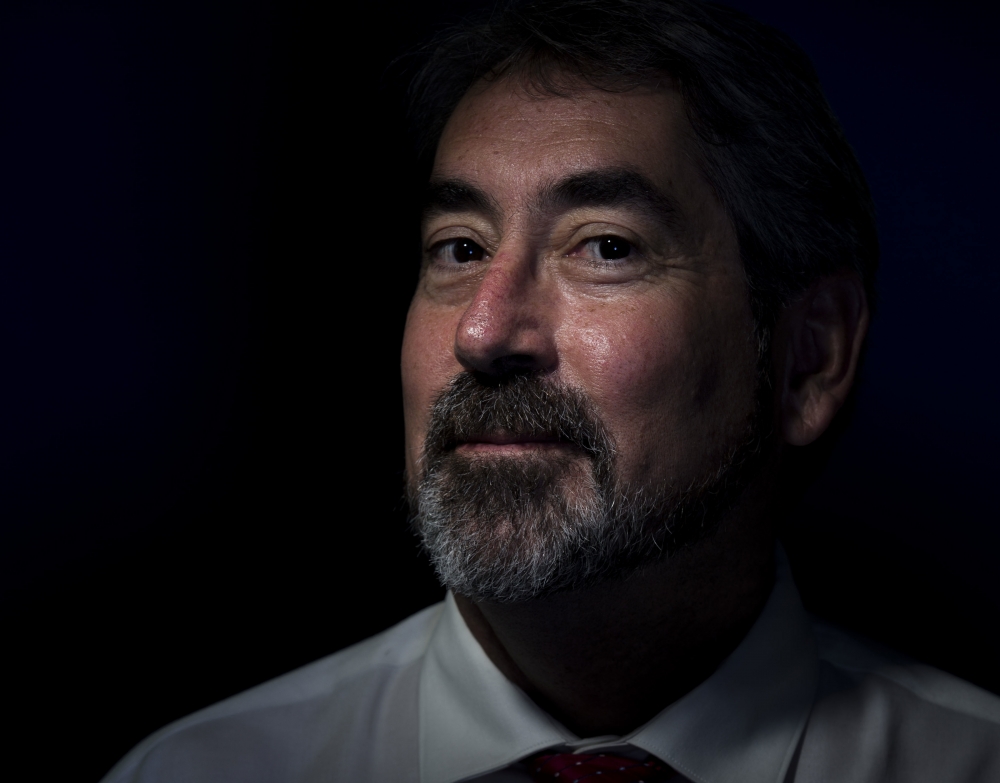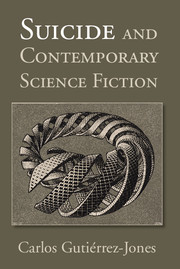Reboot: Dying to Survive in Science Fiction


A husband persuades his wife to commit a “pretend” suicide, only to have it turn real (“Inception”). A scientist recalls his wife’s suicide while investigating that of a colleague, and is driven to consider taking his own life (“Solaris”). A cyberthief subjects himself to temporary brain death in an effort to liberate an artificial intelligence (“Neuromancer”). A young boy training to combat aliens is driven to suicidal battle strategies (“Ender’s Game”).
In his new book, “Suicide and Contemporary Science Fiction” (Cambridge University Press, 2015), Carl Gutiérrez-Jones, a professor of English at UC Santa Barbara, examines a fascination with suicidal crises that has marked the genre from its earliest beginnings right up to the current moment. At its heart, Gutiérrez-Jones’ study identifies a seemingly counterintuitive supposition shared by many of the genre’s most famous practitioners: Faced with radically changing environments, humanity’s most compelling prospect for adapting entails rebooting itself — wiping away entrenched habits of thought through acts of creative self-destruction akin to what an addict experiences in “bottoming out.”
In approaching science fiction in this manner, Gutiérrez-Jones suggests that the genre may play a certain therapeutic role as it helps audiences imagine adaptation in times of traumatic upheaval. “Sci-fi really came into being at a moment when the cultures that were consuming it needed some way to mediate radical changes that were going on,” said Gutiérrez-Jones, who teaches courses on science fiction. Ever since the dawn of modern science, and the challenge it presented to the existing ways of perceiving the world, he added, science fiction writers have been trying to come to terms with humanity’s shifting status.
In fact, for virtually every major scientific or technological revolution, science fiction has responded with a host of contemporary stories in which protagonists face self-directed violence in an attempt to adapt to, or compensate for, the traumatic developments. H.G. Wells’ “The Island of Doctor Moreau” wrestles with humanity’s “new” relation to animals in the wake of Darwin’s work. Stanislaw Lem’s “Solaris” responds to the advent of nuclear warfare, focusing on the all-too-human impulse toward violence when it is not possible to control or to comprehend new phenomena. Meanwhile, William Gibson’s “Neuromancer” imagines the arrival of artificial intelligence, suggesting that only creative self-destruction can foster kinship between AIs and humanity, and thereby avoiding the spiral into warfare subsequently presented by the series of “Terminator” films.
“Faced with changes of this magnitude, it is easy to see why the artists might be inclined to explore the radical rebooting of humanity,” said Gutiérrez-Jones, who is also UCSB’s acting dean of undergraduate studies. “As dramatic shifts in science and technology remake the worlds imagined in these texts, the artists throw a spotlight on how humans must wrestle with their place in the world, and with their assumptions about this fit. For a genre often defined by its exploration of other worlds, this turn toward the inner workings of the mind is quite telling. It invites audiences to see science fiction in a new light.”
Although Gutiérrez-Jones notes that the prevalence of the creative self-destruction theme is undeniable, the suicide theme was not at all on his mind when he first began teaching his science fiction courses at UCSB. “It was really the students in my classes who brought this theme to fore by consistently generating questions about it,” he said. Noting the value of these classroom and office hour conversations, he added that “the students who come to the sci-fi classes don’t have to be sold on the value of the literature. They’re reading it in their spare time, they’re reading the criticism and they just can’t wait to talk.”
Gutiérrez-Jones noted that the general difficulties people experience in discussing suicide may help explain why very little science fiction criticism has engaged the topic to date. “Suicide is often very difficult to talk about. Even so, science fiction, as kitschy as it can be, has a long history of tackling difficult topics and exploring deep-seated fears,” he said.
For some of the more contemporary artists — Margaret Atwood, for example — the prevalence of this fascination with creative self-destruction is a cause for significant concern. “Atwood deserves much credit for turning the suicidal fascination on its head, inasmuch as her latest trilogy pointedly asks why other forms of change do not receive the same imaginative attention,” said Gutiérrez-Jones.
One thing is certain: In a world that is seeing accelerating, even radical advances in robotics, genetic engineering, and nanotechnology, humanity’s need to wrestle with its shifting status in the world will only grow more pressing. As Gutiérrez-Jones noted, “It is little wonder that the students are invested in these classes; what once seemed far-fetched is now looking like a map to their future.”



